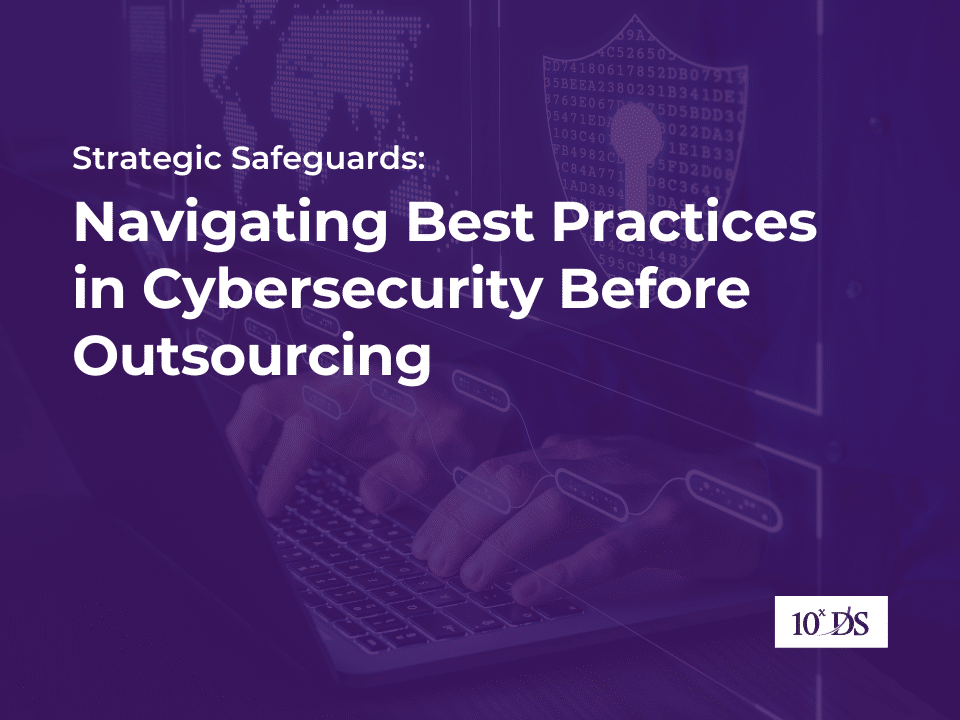
Strategic Safeguards: Navigating Best Practices in Cybersecurity Before Outsourcing
Outsourcing cybersecurity has become an integral component of modern business strategies, as organizations navigate an increasingly complex digital landscape. In an era where data breaches and cyber threats loom large, entrusting the safeguarding of sensitive information to specialized external partners has become not just a convenience but a necessity. This strategic approach allows companies to tap into the expertise of cybersecurity professionals, enhance their defense mechanisms, and stay ahead of evolving threats. However, the decision to outsource cybersecurity requires careful consideration and a proactive approach to ensure that the chosen partner aligns seamlessly with organizational goals and effectively fortifies the digital perimeter against potential risks.
Cybersecurity outsourcing can happen in different ways, depending on the needs and preferences of the organization. There are three main models of cybersecurity outsourcing:
Fully insourced: In this model, the organization’s employees handle all security monitoring themselves. This gives the organization complete responsibility and control over operations, but it also requires a lot of resources, expertise, and investment, especially in technology and tools.
Fully outsourced: In this model, security monitoring is handled entirely by a third-party firm. This reduces the burden on the organization, but it also introduces some risks, such as loss of visibility, quality, and compliance.
Hybrid: In this model, security monitoring is handled by a partnership between the in-house team and an external team. This allows the organization to leverage the best of both worlds, but it also requires careful coordination and communication.
The choice of the best model depends on various factors, such as the size, complexity, and budget of the organization, the type and level of threats they face, and the availability and quality of service providers.
Cybersecurity outsourcing is a growing trend among organizations that want to access greater expertise, resources, and standards for cyber security. According to a recent survey by Deloitte, 81% of executives turn to third-party vendors to provide, in full or in part, their cybersecurity capabilities. Another survey by Syntax found that 83% of IT leaders are considering outsourcing their security efforts, due to budget cuts, staff reductions, and increased cyber threats. However, outsourcing cybersecurity also comes with some challenges, such as managing the risks, costs, and quality of the service providers, as well as ensuring compliance with data protection regulations. Therefore, organizations need to carefully evaluate their needs, goals, and options before deciding to outsource their cybersecurity functions.
Here are some best practices to follow to ensure the safety of your digital assets.
Thorough Vendor Assessment
Research the cybersecurity provider thoroughly. Look into their reputation in the industry, check for certifications (ISO 27001, SOC 2, etc.), and seek feedback from their existing clients. Ensure they comply with relevant regulations and standards.
Define Clear Objectives
Clearly articulate your cybersecurity goals and expectations. Whether it’s network security, threat detection, or compliance, providing a clear roadmap helps the outsourcing partner tailor their services to your specific needs.
Data Protection and Privacy
Clearly outline the handling and protection of sensitive data. Specify how data should be stored, transmitted, and accessed. Ensure that the outsourcing partner complies with data protection laws like GDPR or HIPAA.
Contractual Agreements
Develop comprehensive contracts that cover all aspects of the outsourcing relationship. Clearly define roles, responsibilities, and expectations. Include SLAs for response times, resolution times, and penalties for breaches of contract.
Regular Audits and Monitoring
Implement regular audits of the outsourcing partner’s systems and processes. Monitoring their performance ensures that they are maintaining the required security standards and promptly addressing any issues.
Communication Protocols
Establish clear communication channels and protocols for reporting security incidents. Define the roles of both your internal team and the outsourcing partner in the event of a breach. Timely and effective communication is crucial in managing cybersecurity incidents.
Continuous Training
Provide ongoing training to both your internal team and the outsourcing partner. This ensures that everyone is updated on the latest cybersecurity threats and best practices. Regular training sessions help in maintaining a high level of awareness and preparedness.
Incident Response Plan
Develop a detailed incident response plan collaboratively. This plan should outline the steps to be taken in the event of a security incident, including communication procedures, mitigation strategies, and post-incident analysis.
Regular Performance Reviews
Schedule periodic performance reviews to assess the outsourcing partner’s effectiveness. Address any concerns or areas for improvement promptly. Regular feedback sessions contribute to continuous improvement in cybersecurity measures.
Stay Informed
Stay abreast of the latest developments in the cybersecurity landscape. Understand emerging threats, vulnerabilities, and industry best practices. This knowledge empowers you to make informed decisions and guide the outsourcing partner effectively. Regularly update your cybersecurity strategy based on the evolving threat landscape.
In conclusion, the decision to outsource cybersecurity is a pivotal step in fortifying an organization’s resilience against the ever-evolving realm of digital threats. By leveraging the specialized skills of external cybersecurity partners, businesses can focus on their core competencies while entrusting the protection of sensitive information to experts. However, success in cybersecurity outsourcing hinges on a comprehensive understanding of organizational needs, meticulous partner selection, and a commitment to ongoing collaboration and improvement. As technology continues to advance, the collaborative synergy between organizations and cybersecurity service providers will be crucial in maintaining robust defense mechanisms and safeguarding the integrity of digital assets in an age where cyber threats are a persistent reality.
Talk to our Experts to learn more


